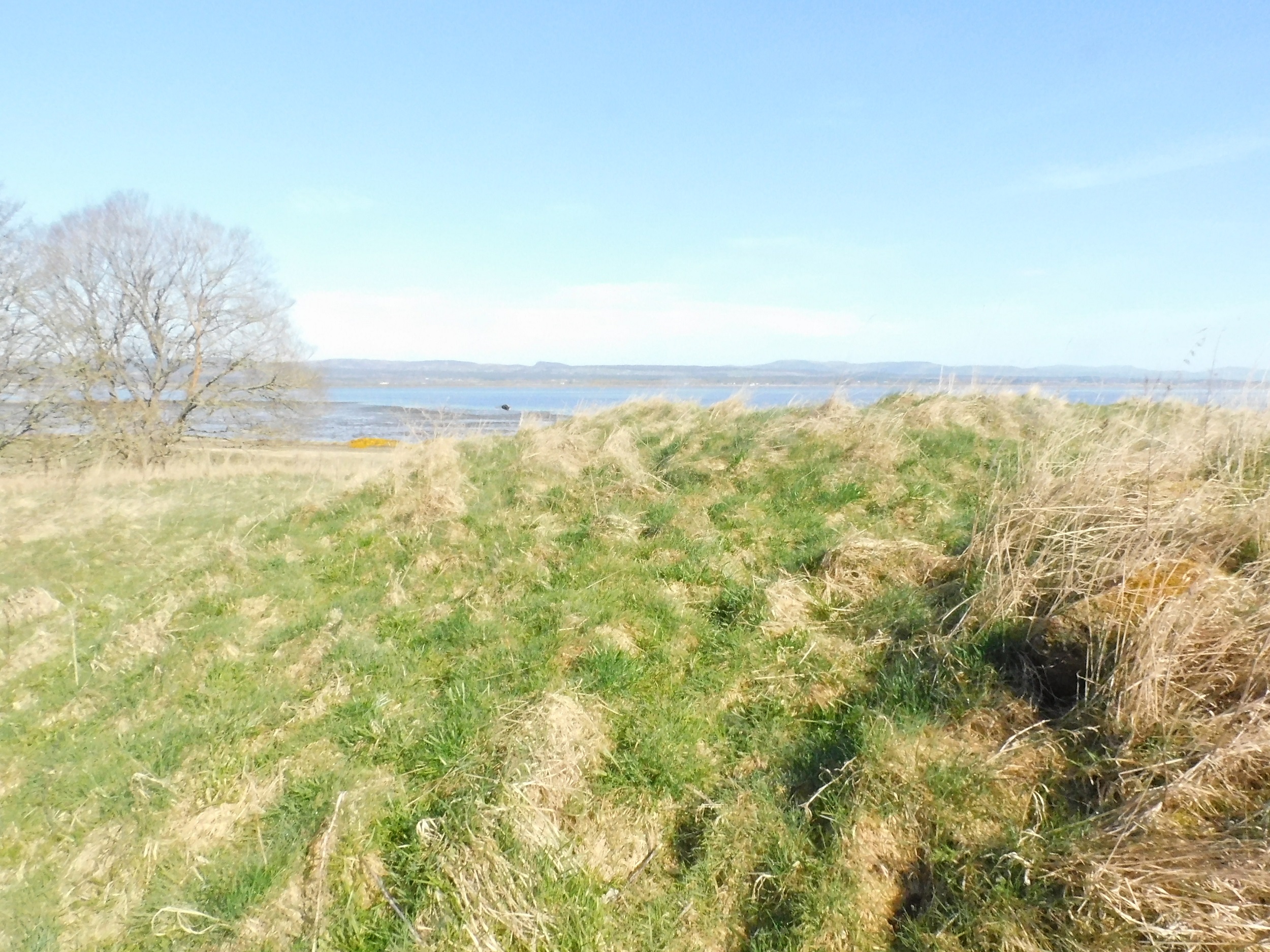
North east section of the wall.

North east section of the wall.

There appears to be an extra line of defence on the east.

The north west arc.

The dun looking from north west to south east.

North section of the defences.

The north west remnants.

Looking south east, the North Sea, further south the very important Glen Morangie distillery.

Looking north west over the Dornoch Firth.

Closer, after jumping the fence and a small stream.

Follow the wall, it leads straight to the dun.
The logical spot to park to go see the dun is at the layby on the A9 at
NH 76570 83716, opposite Morangie distillery.
Beside the layby is an ENORMOUS erratic, which has sunk down into a hollow so far I don’t think you can see it when driving north, although you can when driving south. It is inscribed with a dedication to Walter Scott and is known as the Big Stone of Morangie.
The Tain museum website gives three folk tales about the stone –
1 Two giants, one on Struy and the other on Tarbat Ness, were throwing a large stone to each other when one of them got tired and the stone fell half way and landed at Morangie.
2 “When Glenmorangie Distillery was being built in 1843, one of the masons engaged on the work was wont to repair to this stone at the dinner hour to eat his ‘piece’, and at the same time occupy himself in commemorating one to whose memory, no doubt, he was deeply attached”
3 “As far as I can remember, he said the lady was passing through Tain when she heard of the death of Sir Walter Scott & being a great admirer of the novelist asked & obtained permission from Major Rose’s father, who owned Tarlogie at that time, to have the inscription cut on the stone.” Other, relatively reliable sources, identify the lady as a Miss Lindsay who “had published a book on ‘Boulders’ or some such subject” and state that it was carved by a mason working on a bridge nearby.
Source – tainmuseum.org.uk/article.php?id=199






































































